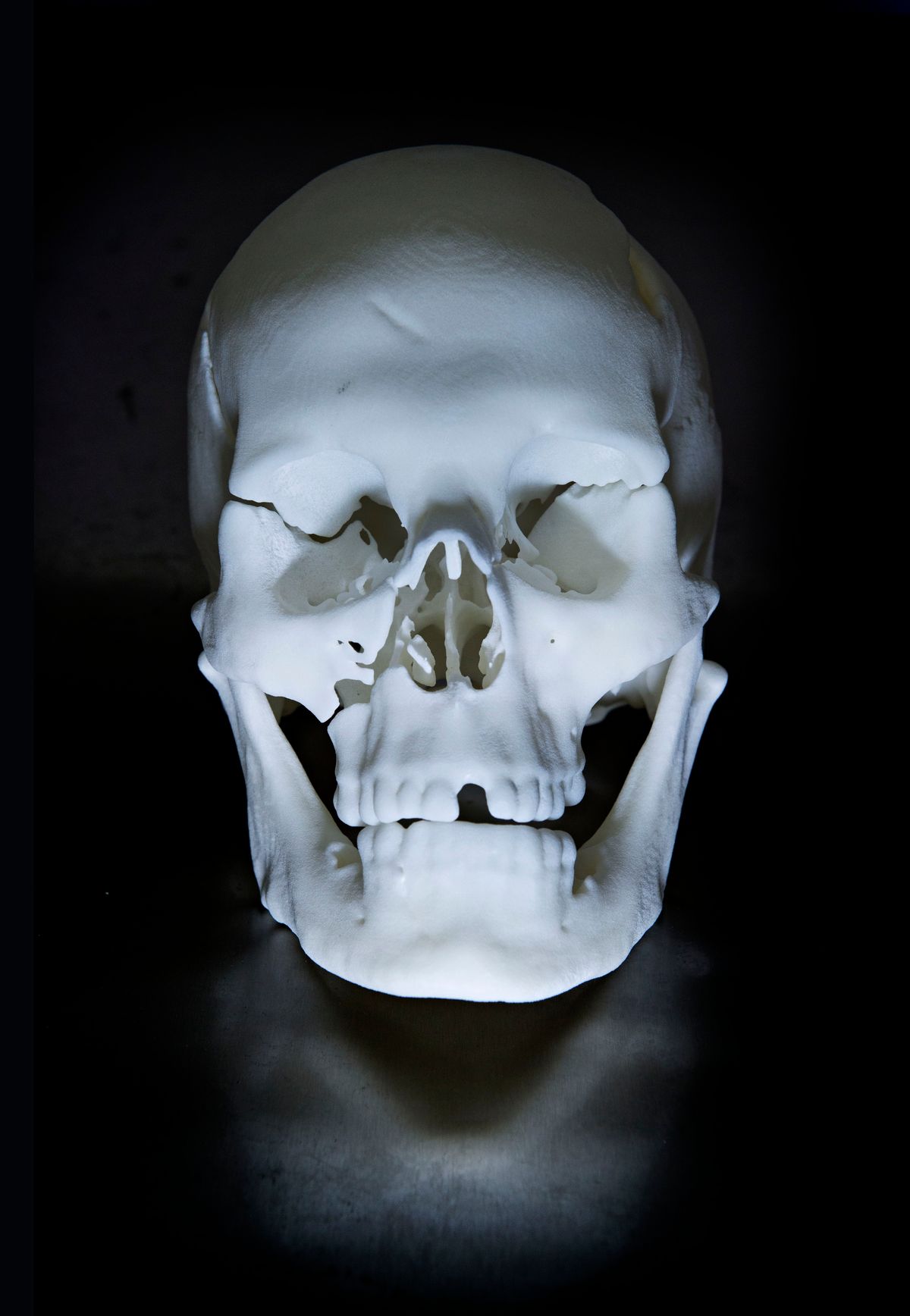Richard III was famously slain in battle in 1485 as part of a dynastic struggle known as the War of the Roses, and his rise, fall, and horseless death were chronicled by Shakespeare. Despite his historical importance, the church where his body was interred was destroyed and his grave site was lost. Scholars at the University of Leicester only recently launched an effort to rediscover the exact site, and then to identify the remains they found with reference to historical texts and DNA testing.
Once the Leicester scholars had the remains, they used CT scans to map the bones with all their battle wounds. Those CT scans were passed along to researchers at Loughborough University's Additive Manufacturing Research Group.
Professor Russell Harris, who heads that group, told me that his team is known for using 3-D printing for medical modeling. "I do a lot of work with hospitals, usually working with living people or people relatively recently deceased," he said. "Working with someone whose remains are over 500 years old, and who ended up being a person of great historical significance, was slightly unusual." That, I think, is what's known as British understatement.
To generate a 3-D computer model from the long procession of CT scans, Harris's group used 3-D modeling software from companies like Materialise, which offers a software package tailored to anatomical modeling. Materialise's software is more typically used by prosthetics companies, and by specialized surgeons who use 3-D models to practice and plan complicated procedures.
Harris explains that the Loughborough team started work with Richard III's skull, both because it hosts most of the major battle wounds and because a skull is more likely to capture the public imagination than, say, a fibula—a fact demonstrated by the brief but dramatic video below, depicting a bit of the printing procedure.
Once Harris had the computer model, his team used a 3-D printing technique called laser sintering to fuse tiny particles of plastic into a 3-D skull. Harris says a Richard III skull can be printed in less than 24 hours. The team will move on to other skeletal parts soon.
So why do this? Do we really need an assembly line that can rapidly produce kingly skulls? Harris explains that the 3-D printing was done in the name of research and preservation. "The remains are relatively fragile, so [researchers] must be very careful how they handle them," he told me. And King Richard III's bones are of such historical significance, they're certainly destined for a museum display case. "Capturing that data, both electronically and physically, for further study, is of big significance," he said.
Photo: Andrew Weekes Photography
Eliza Strickland is a senior editor at IEEE Spectrum, where she covers AI, biomedical engineering, and other topics. She holds a master’s degree in journalism from Columbia University.




